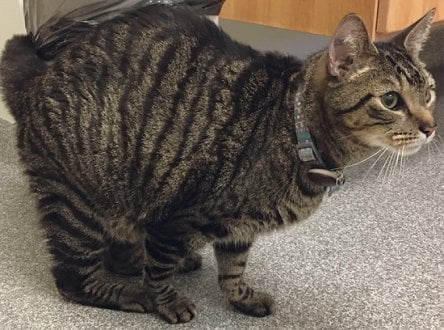What is diabetic neuropathy?
Diabetic neuropathy is a common complication seen in cats with diabetes. The progression of this condition can take several months, and it can lead to permanent damage if not treated. The femoral nerve (major peripheral nerve of limbs) in the hind legs is the frequent site of diabetic neuropathy in cats.
Diabetic neuropathy in cats causes
Cats with this condition, which is also called plantigrade gait, will begin to walk on their heels rather than toes. The joints, nerves, and skin of the hind legs become progressively more damaged. The cause of diabetic neuropathy in cats is vitamin B12 deficiency, which is caused by the insulin used to treat diabetes. A lack of vitamin B12 prevents neurons from maturing.
Treatment
Treating feline diabetic neuropathy depends on the stage at which it is diagnosed. Fortunately, if it is identified in the initial stages, all the symptoms and damage can be reversed.
Proper regulation of blood glucose levels along with supplementation of vitamin B12 is mandatory. One must be able to differentiate between real vitamin B12 deficiency and deficiency caused by diabetes. Pure vitamin B12 deficiency is due to gastric disorders, and the treatment differs in this situation.
When treating diabetic neuropathy, administering B12-rich supplements is recommended alongside taking extreme care in regulating the cat’s blood glucose levels.
While the damage may not be reversed in moderate to extreme conditions, further progression can be stopped with proper care.


